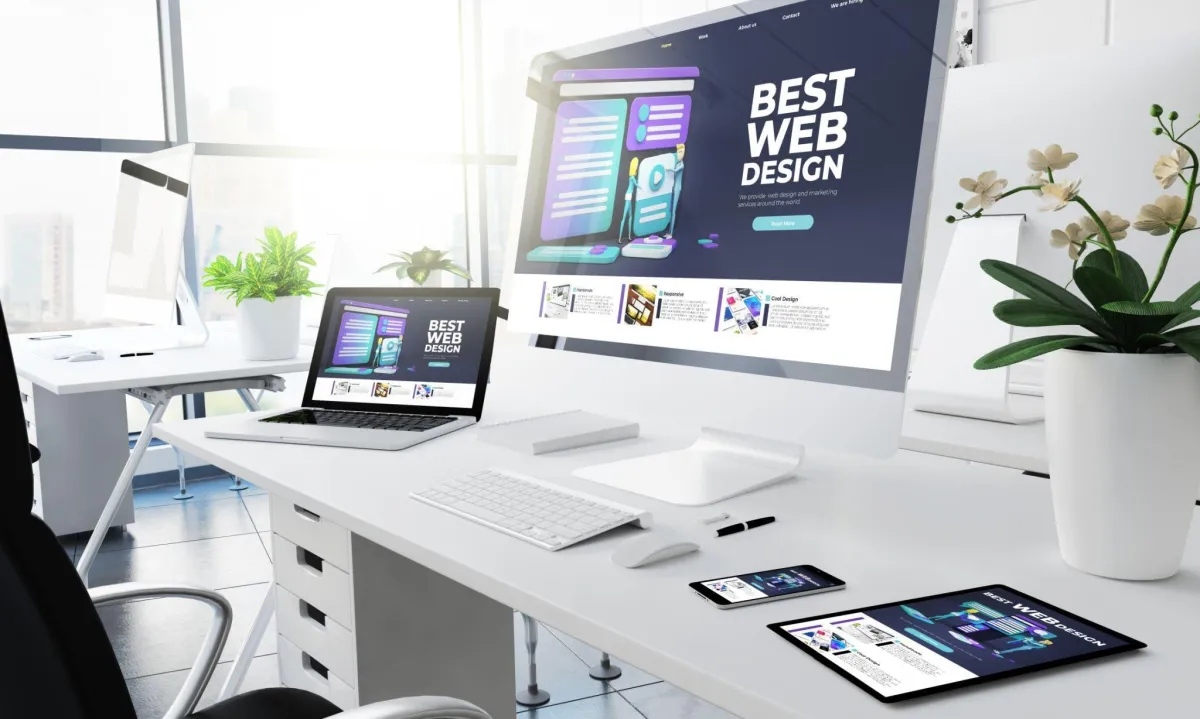How to Design User-Friendly E-commerce Websites for Retailers
How to Design User-Friendly E-commerce Websites for Retailers
In today’s digital landscape, a user-friendly e-commerce website is essential for retailers. The design can make or break the user experience, influencing sales, customer satisfaction, and brand loyalty. To stand out in a competitive market, retailers need an e-commerce site that seamlessly guides users through the buying process, offers intuitive navigation, and includes essential features that make shopping enjoyable. Here’s a step-by-step guide to designing a user-friendly e-commerce website for retailers.
1. Prioritize Responsive and Mobile-Friendly Design
With the majority of online shopping taking place on mobile devices, responsive design is essential for any e-commerce website. A mobile-friendly layout ensures your website looks and functions well on all screen sizes, enhancing usability across devices. For a smoother experience, utilize adaptive images and text that resize automatically and ensure fast-loading times. This will provide a seamless experience for users, encouraging them to spend more time on the site, which could increase conversion rates.
2. Simplify Navigation for Easy Product Discovery
Effective navigation is crucial to help users find what they need quickly. Consider these best practices:
Clear Category Menus: Structure your product categories in a way that makes sense to your audience. Include both broad categories (e.g., “Women’s Clothing”) and more specific subcategories (e.g., “Dresses,” “Activewear”) to help users filter quickly.
Search Bar with Autocomplete: A search bar is a must-have for e-commerce sites. To make it more effective, include an autocomplete feature that suggests products as users type. This minimizes typing time and helps them find products faster.
Breadcrumbs: Implement breadcrumbs to provide a clear path back to previous pages, helping users stay oriented and reducing frustration.
3. Streamline the Checkout Process
A complicated checkout process is one of the leading causes of cart abandonment. To keep users from leaving at this critical stage, make sure your checkout is as simple and transparent as possible:
Guest Checkout Option: Allow users to make purchases without creating an account. While accounts are helpful for repeat business, a first-time customer may not want the hassle of registration.
Clear Progress Indicators: Show users where they are in the checkout process with step-by-step progress bars. This way, they know how many steps are left to complete the purchase.
Multiple Payment Options: Offer various payment options, such as credit/debit cards, PayPal, Apple Pay, and others. The more options, the more accessible your store becomes.
4. High-Quality Product Images and Detailed Descriptions
Product images and descriptions play a significant role in the buying decision, as they substitute for in-store physical interactions with products. Consider the following for an engaging product page:
High-Resolution Images: Use high-quality images that allow zooming in for detail. Include photos from multiple angles, and if possible, add 360-degree views or short videos.
Detailed Descriptions: Write clear, informative product descriptions that include key details like material, size, and care instructions. Use bullet points to highlight features and benefits for easier reading.
5. Optimize for Fast Loading Times
Slow-loading pages can frustrate users, leading them to leave your site. Retailers should aim for load times of under three seconds, as longer wait times are directly linked to higher bounce rates. Image optimization, efficient coding, and leveraging browser caching are crucial techniques to speed up your site.
6. Incorporate Customer Reviews and Ratings
Social proof through customer reviews can build trust and help users make informed decisions. According to research, many customers rely on reviews before making a purchase. Add a section for customer reviews on each product page, and ensure that reviews are visible, easy to read, and filterable by ratings.
7. Add a Clear Call-to-Action (CTA)
Effective CTAs guide users toward conversion points. On product pages, ensure the “Add to Cart” button is prominently displayed. Use contrasting colors and action-oriented language to make it stand out. Similarly, for category pages, buttons like “Shop Now” or “View Details” encourage engagement.
8. Implement Security Features
An e-commerce site must convey trust and security, especially at the checkout. Use HTTPS to secure your website and display a trust badge on checkout pages. Offer customers information on how their data is protected and ensure that the checkout process adheres to PCI-DSS compliance standards.
9. Use Personalization and Recommendations
Personalization can significantly enhance the user experience. Using past purchase behavior and browsing data, recommend products that might interest users. This can increase engagement, boost average order value, and improve user satisfaction.
Designing a user-friendly e-commerce website for retailers involves a careful balance between aesthetics and functionality. By focusing on responsive design, streamlined navigation, simple checkout, and security, you create a space where customers feel comfortable shopping and are more likely to complete purchases. Remember, the ultimate goal is to create an intuitive experience that guides users effortlessly through browsing and buying, ensuring they return for more.
At Abilene Website Designer, we understand that personal branding is not just about creating a visual identity but also about crafting a memorable and impactful online presence. Our expertise lies in translating your personal brand into a website design that embodies your unique identity while fostering credibility and trust.
When your personal brand and website design align seamlessly, you create a memorable impression on visitors while establishing your credibility in your field. Let us be your partner in this journey to create a website that is not just functional, but also a true reflection of your personal brand.
Reach out to Abilene Website Designer today and let's bring your personal brand to life on the digital canvas. Your online success story begins with a website design that speaks your truth and resonates with your audience.
SHARE:
Elevating Your Online Visibility: SEO-Friendly Web Design Practices
We partner with you to identify your target market and get to work making your site more visible to your key market through our comprehensive digital marketing services.
Increase Your Revenue by Letting
Abilene Website Designer Help You:
1. Identify Your Target Market
2. Bring that Target Market to Your Business

